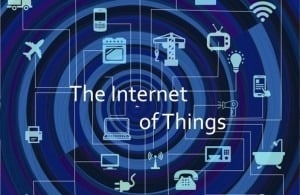
“Any reference architecture co-developed by multiple industry leaders is reassuring.”
The recent release of the OpenFog Consortium’s Reference Architecture should be well-received by prospective users of business-critical IoT systems.
The OpenFog Consortium was launched in November 2015 with founder members including Intel, ARM, Cisco and Microsoft. It now includes more than 50 members. Any reference architecture co-developed by multiple industry leaders is reassuring, as it provides a consensus view of how a system should be designed to truly deliver interoperable, robust and secure end-to-end solutions. The architecture makes explicit what fog computing aims to deliver to fully enable the Internet of Things for business-critical applications.
End users can now avoid committing to products or system architectures that will lock them into proprietary or vendor-specific dependencies in years to come. That opens vendor choice and consequently a more competitive market of deployable IoT infrastructure products and innovative applications.
The release of the reference architecture also provides more opportunities for emerging fog computing vendors, as OpenFog-compliance (also becoming known as fog-readiness) provides an independent assessment of the worthiness of their products in the eyes of the technical leaders who defined the OpenFog Reference Architecture.
For the sake of clarity, edge computing is a subset of fog computing that is focused on the computational value-add of connected things, gateways, fog nodes, and industrial services. Fog computing rather concerns the entire IoT ecosystem — from edge to cloud.
A reference architecture in itself doesn’t guarantee multi-vendor plug-and-play, but it’s a much needed step along that path. It provides a common view on eight “pillars” representing the key attributes that a system needs to embody the OpenFog definition of a horizontal, system-level architecture that provides the distribution of computing, storage, control, and networking functions closer to the data source along the Cloud-to-Thing continuum.
These pillars help facilitate an assessment of fog computing products and their readiness for seamless computing “from the sensor to the cloud” — allowing computational value-add anywhere in the IoT system that it makes sense. That could be at the thing, device, or machine level; a smart gateway; a fog node; or cloud service. The architecture provides a view of truly distributed computing to address all of a user’s requirements, including:
Technical: latency, security, resiliency, autonomous operation, data management, support for analytics, machine learning.
Business concerns: operational excellence, support for new business models, furthering eco-friendly corporate policies with regard to waste, energy utilization, pollution, and worker safety.
In summary, the OpenFog RA is an important step forward that gives credence to fog computing in a broad and reassuring way for both aspiring users and vendors.





























